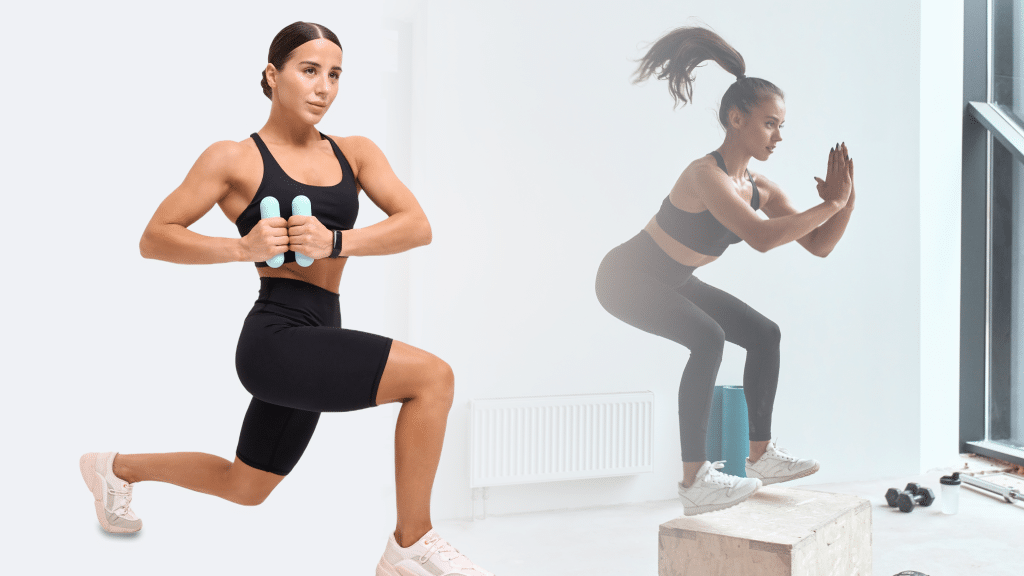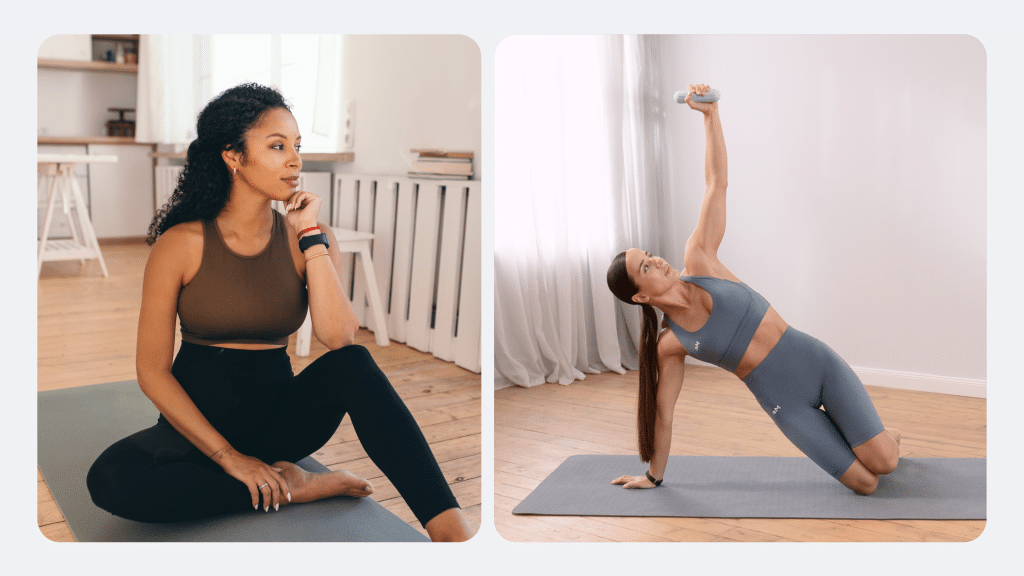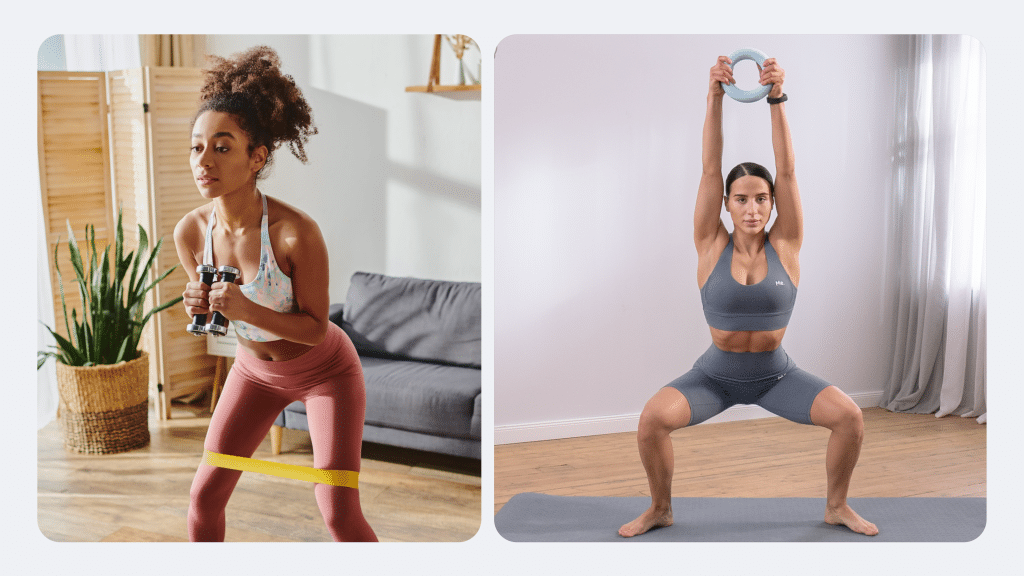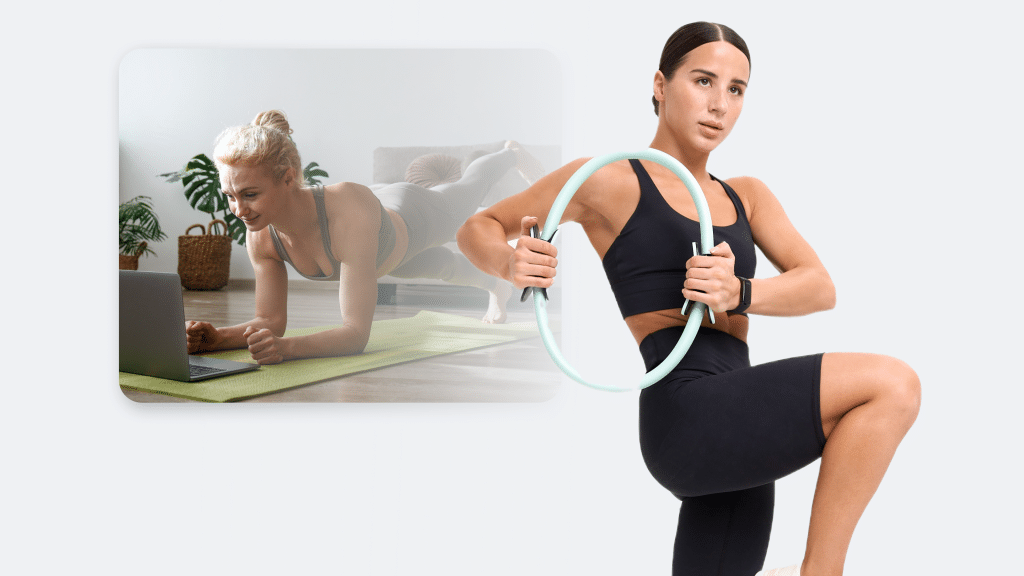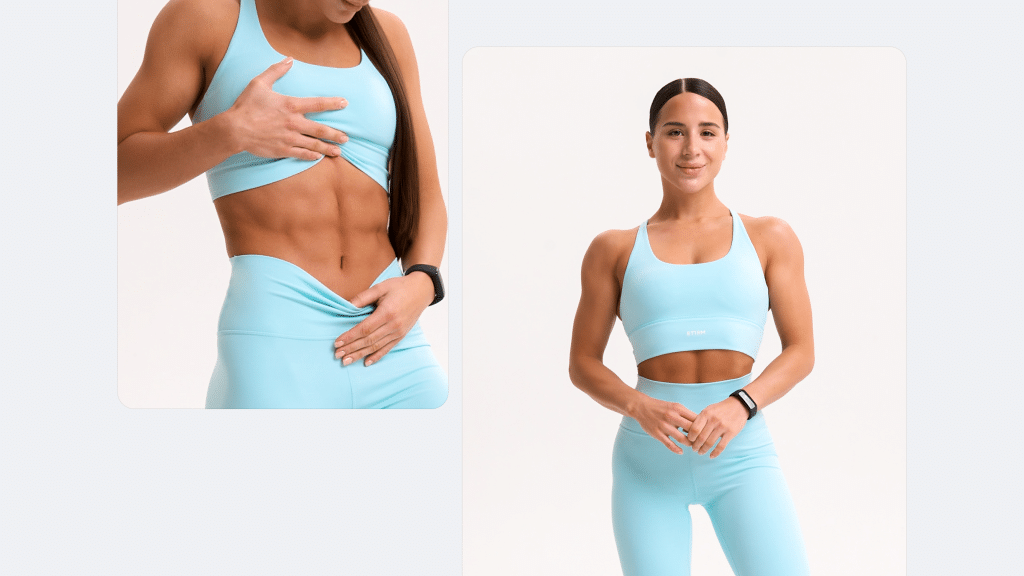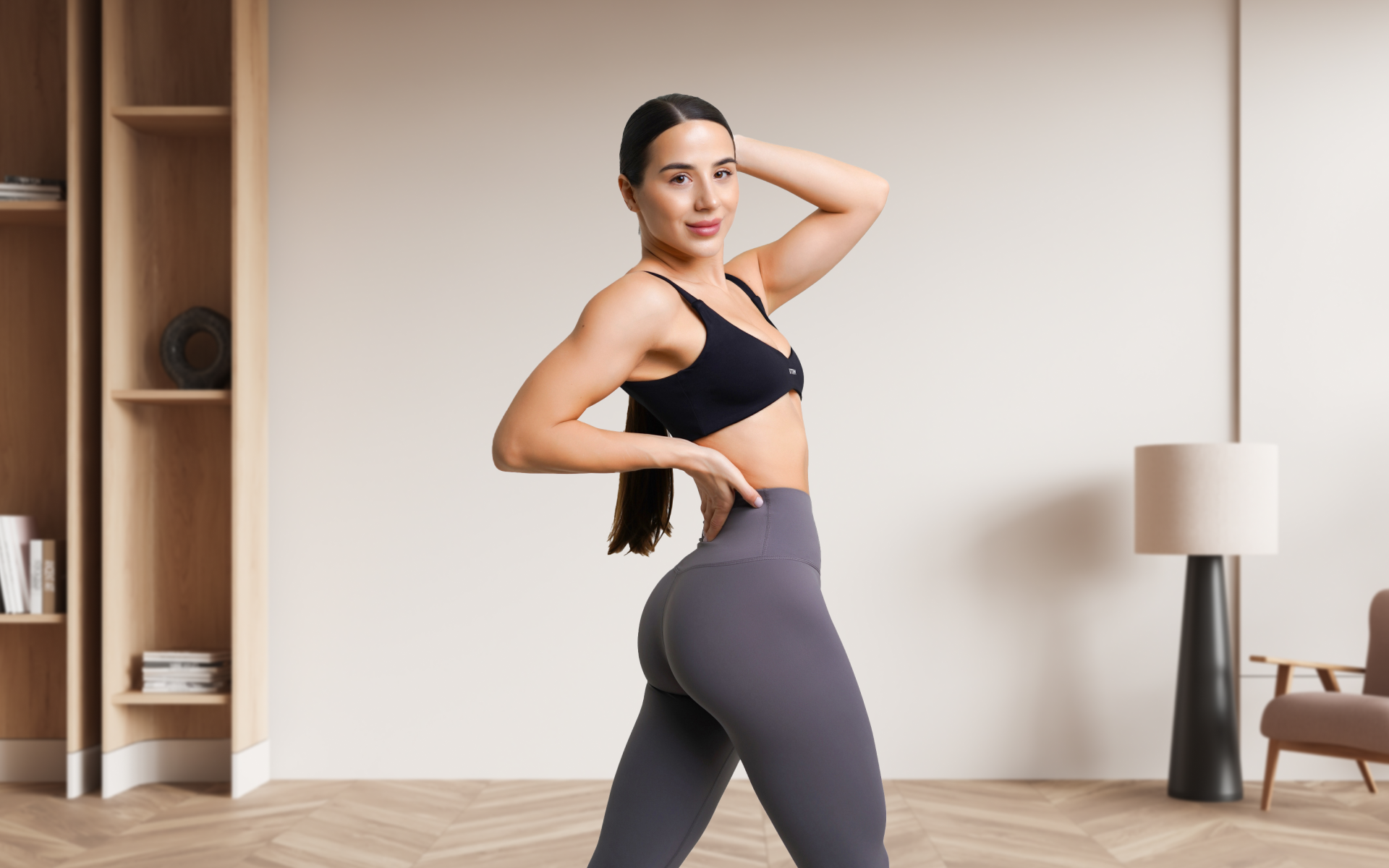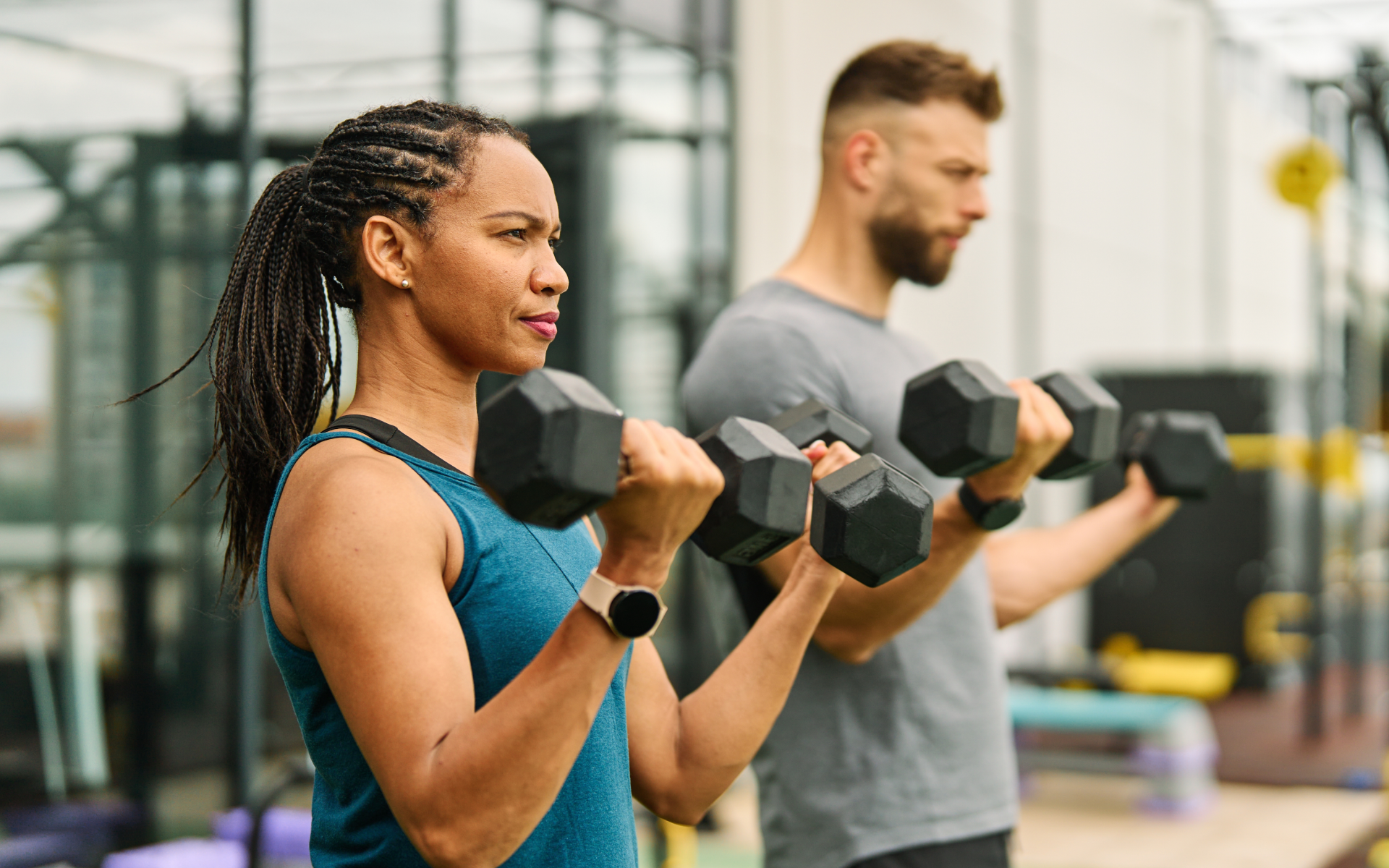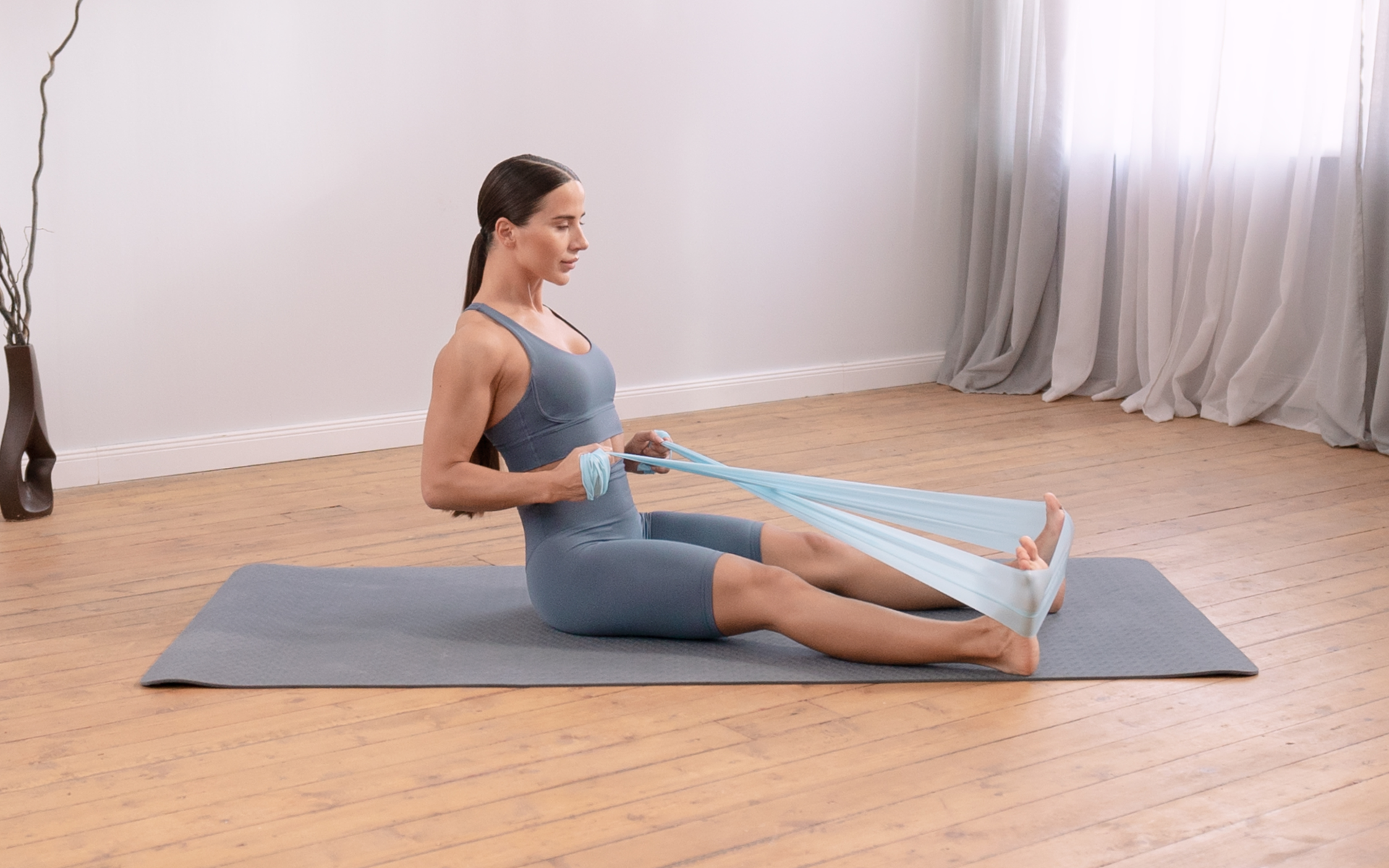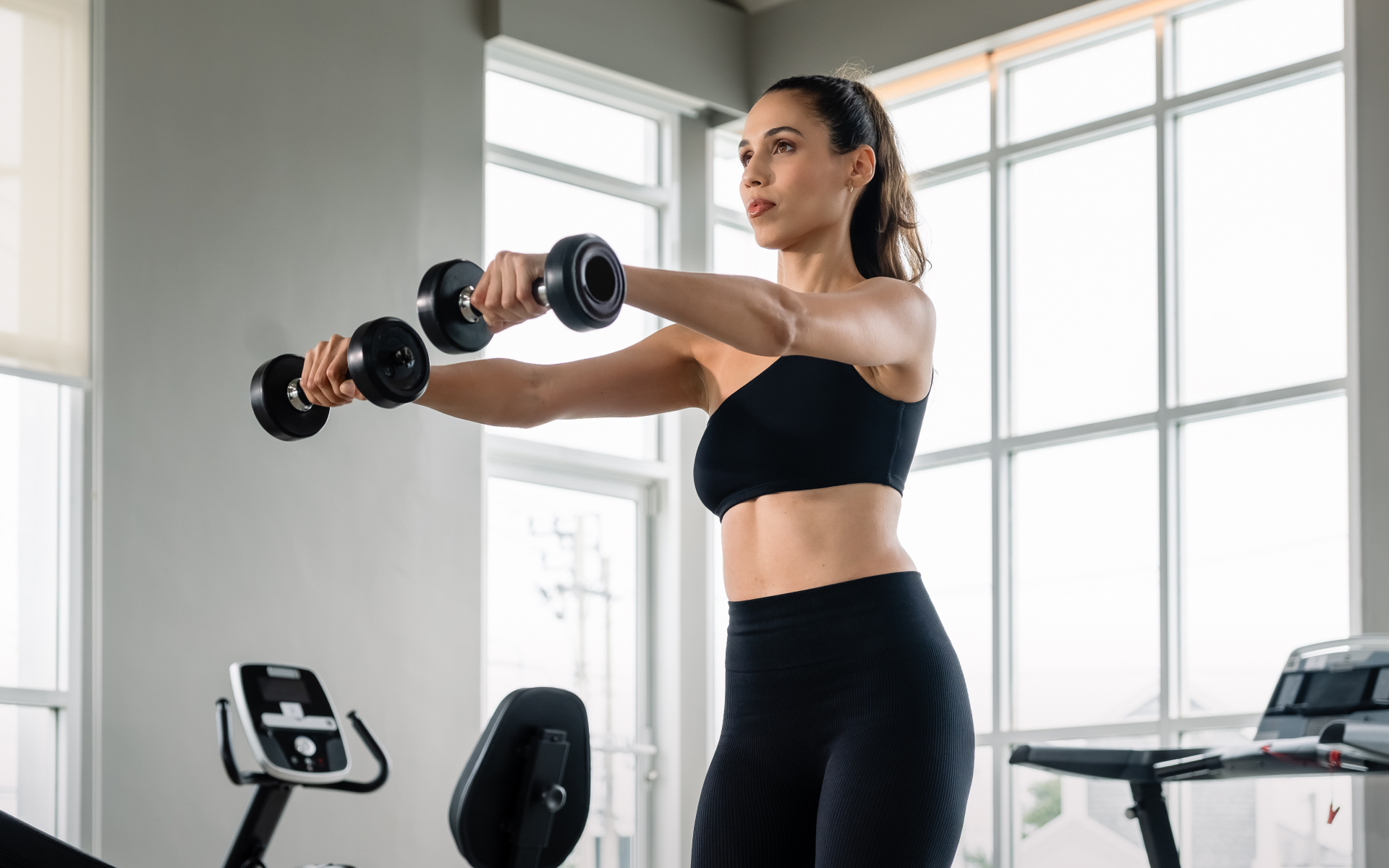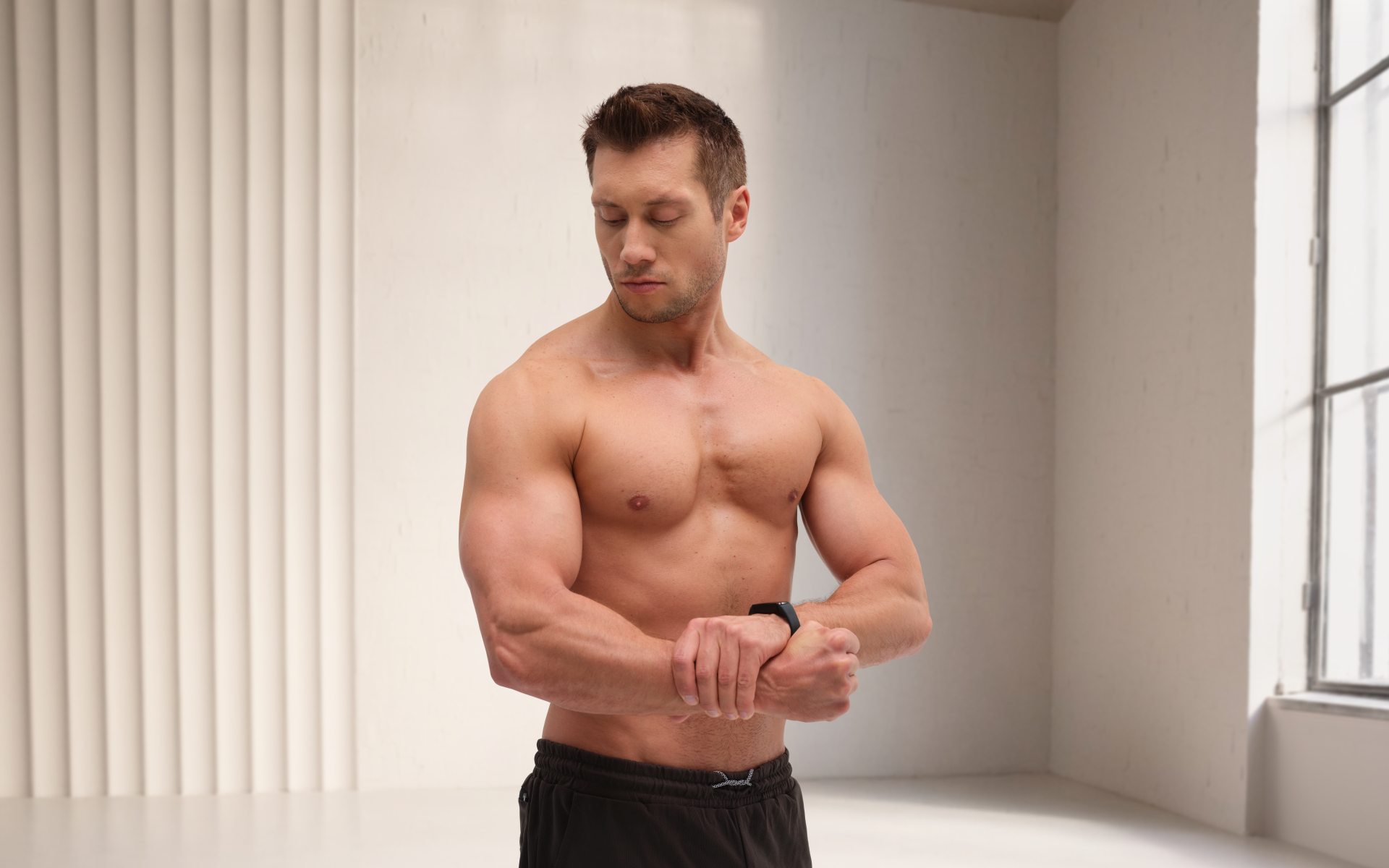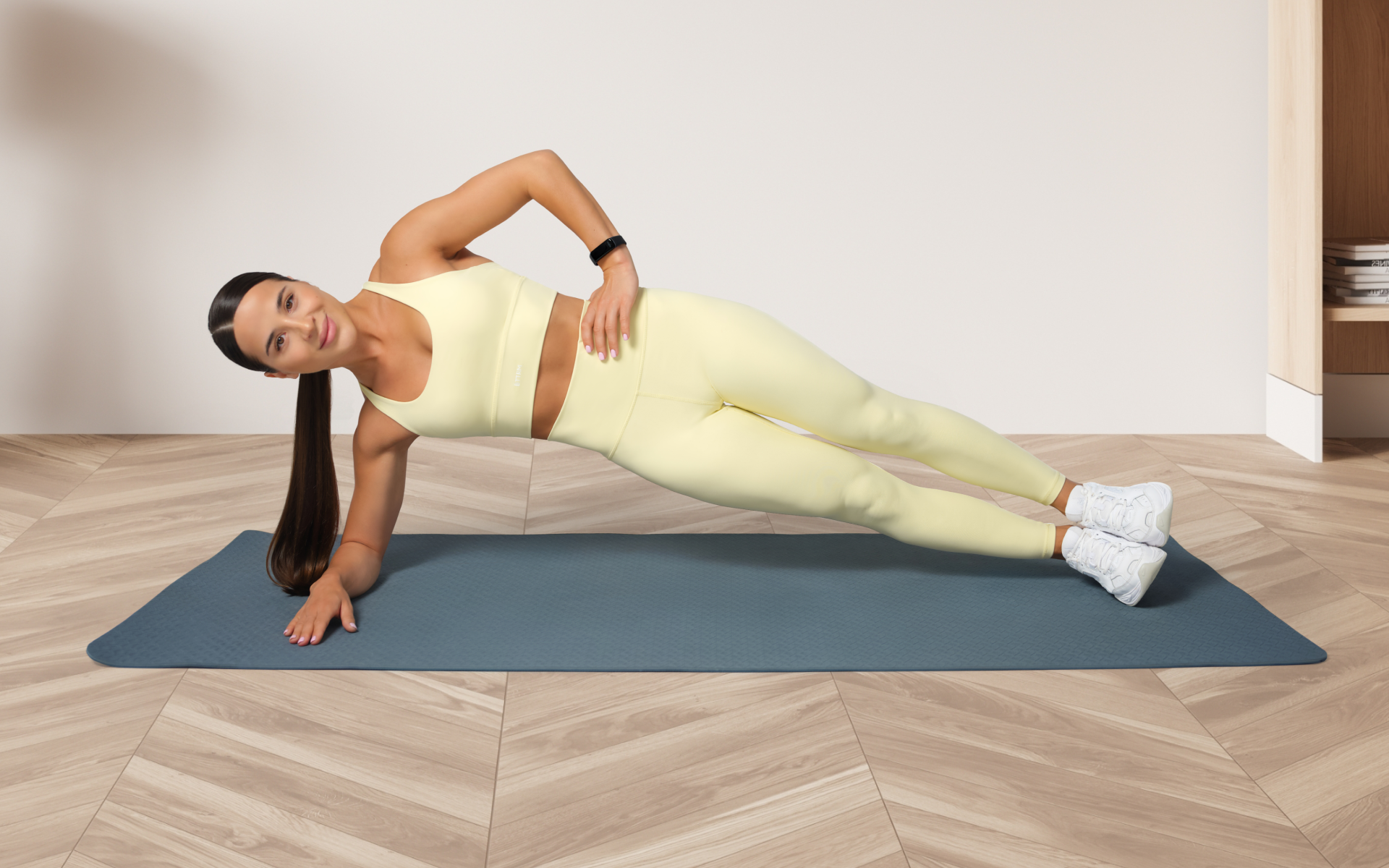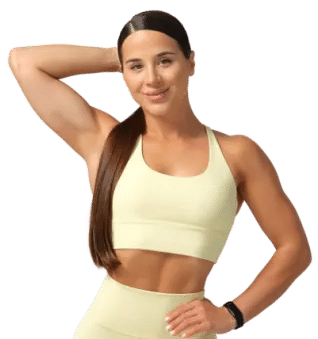You’ve probably seen calisthenics experts doing complex moves like muscle-ups and handstands with ease, and you might have thought that calisthenics is only for the exceptionally fit and highly flexible.
This couldn’t be further from the truth. Calisthenics is a form of bodyweight training that involves natural movements such as pushing, pulling, jumping, and squatting to improve strength and functional fitness. It can be modified for any fitness level, making it accessible to everyone.
We’ll walk you through a simple calisthenics routine that will help improve your functional fitness and overall strength.
What Is a Simple Calisthenics Routine?
A simple calisthenics routine should consist of exercises that target all major muscle groups and engage the entire body.
These are called compound movements and they are essential for functional fitness. Unlike isolation exercises that only target specific muscles, compound movements mimic real-life movements and help you develop the strength and coordination needed for everyday activities.
That being said, a simple calisthenics routine doesn’t have to be complicated or involve advanced moves. This is especially important for beginners, who should focus on mastering the basics before progressing to more advanced exercises.
4-Week Simple Calisthenics Workout Routine
This simple calisthenics routine is designed to be done three times a week, with at least one day of rest in between sessions. It is designed to improve functional strength, muscle endurance, and overall physical fitness as it gets more challenging each week.
Week 1
Objective: This week is all about establishing a solid foundation for your strength training journey. By focusing on basic movements and building foundational strength, you’ll prepare your body for more advanced exercises in the upcoming weeks.
Frequency: 3 days (e.g., Monday, Wednesday, Friday)
- Knee Push-Ups: 2 sets of 5-8 reps
- Assisted Pull-Ups: 2 sets of 3-5 reps (use a resistance band or a sturdy platform for assistance)
- Bodyweight Squats: 2 sets of 10-12 reps
- Glute Bridges: 2 sets of 10-12 reps
- Lunges: 2 sets of 8-10 reps per leg
- Plank: 2 sets of 20-30 seconds
- Rest Days: 4 days
Whether you’re a workout beast or just a beginner making your first foray into the world of fitness and dieting – BetterMe has a lot to offer to both newbies and experts! Install the app and experience the versatility first-hand!
Week 2
Objective: As you progress into week two, the focus shifts to continuing to build your strength. You’ll increase the intensity of the exercises while maintaining proper form, allowing your muscles to adapt and grow stronger. This week is crucial for reinforcing the gains from the previous week.
Frequency: 3 days (e.g., Monday, Wednesday, Friday)
- Knee Push-Ups: 3 sets of 8-10 reps
- Assisted Pull-Ups: 3 sets of 5-7 reps
- Bodyweight Squats: 3 sets of 12-15 reps
- Glute Bridges: 3 sets of 12-15 reps
- Lunges: 3 sets of 10-12 reps per leg
- Plank: 3 sets of 30-40 seconds
- Rest Days: 4 days
Week 3
Objective: This week marks a significant transition as you begin to incorporate unassisted movements and increase the overall intensity of your routine. This is where you’ll start to see the fruits of your labor, as you challenge your body to perform without assistance. Focus on pushing your limits while maintaining good technique.
Frequency: 4 days (e.g., Monday, Tuesday, Thursday, Friday)
- Standard Push-Ups: 3 sets of 5-8 reps
- Unassisted Pull-Ups: 2 sets of 2-4 reps
- Bodyweight Squats: 4 sets of 15-20 reps
- Glute Bridges: 3 sets of 15-20 reps
- Lunges: 3 sets of 12-15 reps per leg
- Plank: 3 sets of 40-60 seconds
- Rest Days: 3 days
Week 4
Objective: In week four, the emphasis is on enhancing your functional strength and endurance. You’ll increase the volume of your workouts and challenge yourself with higher repetitions. This is a critical week for building stamina and overall fitness, while preparing for more challenging workouts ahead.
Frequency: 4 days (e.g., Monday, Tuesday, Thursday, Friday)
- Standard Push-Ups: 4 sets of 8-12 reps
- Unassisted Pull-Ups: 3 sets of 4-6 reps
- Bodyweight Squats: 4 sets of 20-25 reps
- Glute Bridges: 4 sets of 15-20 reps
- Lunges: 4 sets of 12-15 reps per leg
- Plank: 4 sets of 60 seconds
- Rest Days: 3 days
This structured approach will help you gradually increase your strength and endurance while focusing on functional fitness through compound movements. Adjust the repetitions according to your fitness level, making sure that you maintain proper form throughout.
What Are the Basic Exercises for Calisthenics?
The basic calisthenics exercises are typically those that engage multiple muscle groups and require little to no equipment. As mentioned earlier, these exercises are compound movements that mimic real-life movements and help build functional fitness. Some of the most common basic exercises in calisthenics include:
Knee Push-Ups
Knee push-ups mainly target the chest, shoulders, and triceps, making them a great option for building upper body strength. They are especially beneficial for beginners and those recovering from injuries.
If knee push-ups feel too challenging, start with wall pushups, which will allow you to perform the movement at an angle for easier management. As you gain strength, you can shift to standard push-ups to increase the challenge.
Steps to Perform Knee Push-Ups:
- Start on all fours, positioning your hands slightly wider than shoulder-width apart.
- Shift your weight forward, placing your knees on the ground while keeping your toes tucked under.
- Engage your core and be sure your body forms a straight line from your head to your knees.
- Lower your chest toward the ground by bending your elbows.
- Push through your palms to return to the starting position, fully extending your arms.
Read more: What Does Calisthenics Do To Your Body: A Blow-By-Blow Explanation
Assisted Pull-Ups
Assisted pull-ups is a great exercise that effectively targets the back, biceps, and posterior shoulders, making it perfect for building upper body strength. Beginners can benefit from assistance to develop the necessary muscles.
Use resistance bands or an assisted pull-up machine for support. As you gain strength and confidence, gradually reduce the assistance until you can do unassisted pull-ups with ease.
Steps to Perform Assisted Pull-Ups:
- Choose Your Assistance Method: Use resistance bands or an assisted pull-up machine, setting it to an appropriate level of support.
- Grip the Bar: Grab the pull-up bar with your palms facing away from you (overhand grip) or towards you (underhand grip), making sure your hands are about shoulder-width apart.
- Note: Pull-ups with an underhand grip are called chin-ups.
- Engage Your Core: Tighten your core muscles to stabilize your body throughout the movement.
- Pull Yourself Up: Using your back and arm muscles, pull your chin above the bar while allowing the assistance to help you.
- Lower Down Slowly: Control your descent as you lower yourself back to the starting position, making sure you don’t drop too quickly to maintain muscle engagement.
Bodyweight Squats
Bodyweight squats are a great exercise that target the quadriceps, hamstrings, and glutes, making them a valuable addition to any fitness routine.
They can be easily modified for beginners, such as using a chair for support or doing half squats. As you build strength and confidence, progress by increasing repetitions or adding variations like jump squats for an extra challenge.
Steps to Perform Bodyweight Squats
- Stand with your feet shoulder-width apart and your toes slightly pointed outward.
- Keep your chest up and shoulders back as you engage your core.
- Bend your knees and lower your body as if you’re sitting back into a chair, making sure your knees don’t extend past your toes.
- Lower yourself until your thighs are parallel to the ground (or as low as is comfortable).
- Push through your heels to return to the starting position, fully extending your legs.
Glute Bridges
Glute bridges are a fantastic exercise that primarily target the glutes and lower back, making them a great addition to any fitness routine. If you’re new to this workout, start with simpler variations, like doing them on the floor without weights. As you build strength, progress by elevating your feet on a bench or adding weights for more challenges.
Steps to Perform a Glute Bridge:
- Lie on your back with your knees bent and feet flat on the floor, hip-width apart.
- Place your arms at your sides, palms facing down for stability.
- Press through your heels, engaging your glutes as you lift your hips towards the ceiling.
- Hold the bridge position for a moment at the top, squeezing your glutes.
- Slowly lower your hips back to the starting position and repeat for the desired number of repetitions.
Lunges
Lunges are a great exercise that target the quadriceps, hamstrings, and glutes, making them essential in any fitness routine. Beginners can start without weights to focus on form and balance. As you gain strength and confidence, gradually add weights or try variations like reverse lunges or walking lunges, to keep your workouts challenging and engaging.
Steps to Perform a Lunge:
- Stand tall with your feet hip-width apart.
- Take a step forward with your right foot, lowering your body until both knees are at about a 90-degree angle.
- Keep your front knee directly above your ankle and your back knee hovering just above the ground.
- Push through your right heel to return to the starting position.
- Repeat on the left side, alternating legs for the desired number of repetitions.
Plank
The plank is an excellent exercise for targeting the core, shoulders, and glutes, making it effective for building overall strength and stability. Beginners can start with simpler variations to develop strength and endurance.
Begin with shorter hold times or modified versions, like the knee plank. As you gain confidence and strength, gradually increase the hold duration or try more challenging variations, such as side planks or elevated planks.
Steps to Perform a Plank:
- Start by lying face down on the floor, then raise your body up onto your forearms and toes, keeping your body in a straight line.
- Be sure that your elbows are directly under your shoulders for proper alignment.
- Engage your core by pulling your belly button toward your spine, and keep your hips in line with your shoulders.
- Hold the position while maintaining a steady breath, focusing on keeping your body tight.
- Start with 15-30 seconds and gradually increase your hold duration as you build strength.
Find more beginner friendly calisthenics workouts in our Easy Calisthenics For Beginners blog.
If you wish to free yourself from all the extra pounds that have been weighing you down for way too long, start using the BetterMe: Health Coaching app and overhaul your entire life!
What Is a Good Schedule for Calisthenics?
Ideally a calisthenics routine should be done three to four times a week, with rest days in between. This allows your muscles time to recover and prevents overtraining.
This is according to the American Council on Exercise, which recommends that beginners start with two days of calisthenics training a week and gradually increase to three or four as they become more experienced (1).
This, however, may not be feasible for everyone, depending on their schedule and fitness goals. It’s important to listen to your body and adjust your calisthenics routine accordingly. Some people may benefit from taking a rest day in between sessions, while others may prefer to workout every day.
Is 20 Minutes of Calisthenics Enough?
20 minutes of calisthenics can make all the difference in a busy schedule.
A study in the Journal of Sports Science and Medicine reveals that just 20 minutes of calisthenics per session can enhance muscular endurance and strength, all without the need for any extra equipment (2).
It is important to note that 20 minutes alone may not be sufficient for significant muscle growth in the long run, as progression in exercises and increasing the intensity is key for muscle development. However, this timeframe can still provide a great workout and help maintain overall fitness.
Read more: Calisthenics Vs Weights: Which Road Should You Go Down?
Is Calisthenics Better than Gym?
Calisthenics may be a better option for many, as it can be done anywhere—at home, in a park, or while traveling—and needs no special equipment. This bodyweight training method offers flexibility and convenience while improving strength, flexibility, and endurance through natural movements. Plus, calisthenics can be easily modified to suit different fitness levels, making it an inclusive choice for everyone.
However, that is not to say that gyms don’t have their benefits. They provide access to a wide range of equipment and also usually offer the opportunity to work with a trainer for personalized workouts. Furthermore, progressive overload is easier to achieve in a gym setting, due to the availability of different weights and machines.
Ultimately, both calisthenics and gym workouts have their own advantages and it depends on personal preference, goals, and access to resources. Combining both can also be a great way to get the best of both worlds and keep workouts varied and engaging. So, try out different options and find what works best for you!
In our previous blog, Calisthenics For Beginners Women, we discussed great calisthenics exercise options for women looking to get started with this effective form of training.
Calisthenics is for everyone, regardless of body type. In fact, many skinny individuals can benefit from bodyweight exercises to build strength and muscle. Starting with basic movements can help you gradually improve your fitness level. You can gain muscle with calisthenics. Calisthenics uses your bodyweight to create resistance, and your body responds with the same physiological adaptations as traditional weight training when a proper training stimulus has been applied. Your musculoskeletal system doesn’t know (or care) if the resistance came from external weights or your own bodyweight. As long as you’re providing progressive overload, your body will adapt! Calisthenics helps to burn fat as it elevates your heart rate and promotes calorie expenditure during workouts (4). For optimal fat loss, combining calisthenics with proper nutrition can lead to the best results. People who do calisthenics are often quite strong. Building strength through bodyweight exercises creates lean muscle and enhances functional strength (5). Many calisthenics practitioners can perform impressive movements, like handstands and muscle-ups, showcasing their strength and skill.Frequently Asked Questions
Can a Skinny Person Do Calisthenics?
Can I Gain Muscle with Calisthenics?
Do Calisthenics Burn Fat?
Are People Who Do Calisthenics Strong?
The Bottom Line
Adding this straightforward calisthenics routine into your weekly schedule can significantly enhance your functional fitness, allowing you to move more effectively in daily life. Not only does it build strength and endurance, but it also encourages flexibility and balance, which are crucial for overall health.
Whether you’re a beginner or looking to fine-tune your skills, remember that consistency and progression are key. Embrace the journey, listen to your body, and enjoy the benefits of improved functional fitness that this routine has to offer.
DISCLAIMER:
This article is intended for general informational purposes only and does not serve to address individual circumstances. It is not a substitute for professional advice or help and should not be relied on for making any kind of decision-making. Any action taken as a direct or indirect result of the information in this article is entirely at your own risk and is your sole responsibility.
BetterMe, its content staff, and its medical advisors accept no responsibility for inaccuracies, errors, misstatements, inconsistencies, or omissions and specifically disclaim any liability, loss or risk, personal, professional or otherwise, which may be incurred as a consequence, directly or indirectly, of the use and/or application of any content.
You should always seek the advice of your physician or other qualified health provider with any questions you may have regarding a medical condition or your specific situation. Never disregard professional medical advice or delay seeking it because of BetterMe content. If you suspect or think you may have a medical emergency, call your doctor.
SOURCES:
- Strength Training Workout for Beginners (2014,acefitness.org)
- The effects of a calisthenics training intervention on posture, strength and body composition (2017,researchgate.net)
- The Mechanisms of Muscle Hypertrophy and Their Application to Resistance Training (2010,journals.lww.com)
- Effect of exercise training on weight loss, body composition changes, and weight maintenance in adults with overweight or obesity: An overview of 12 systematic reviews and 149 studies (2021,nih.gov)
- The Effect of Breaking Up Sedentary Time with Calisthenics on Neuromuscular Function: A Preliminary Study (2022,nih.gov)

